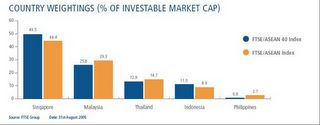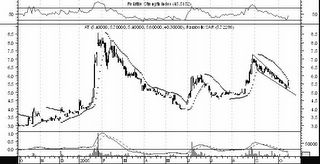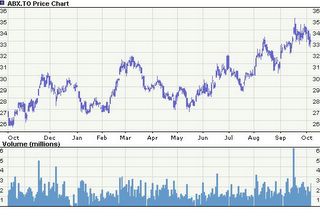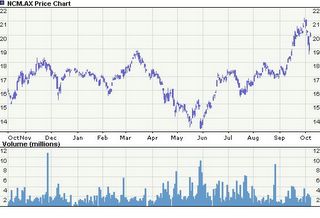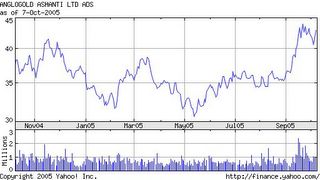``Everything you can imagine is real." -Pablo Picasso (1881-1973) Famous Spanish painter and sculptor
The gradual integration of the Asian Financial Markets could be gleaned as one of the bright spots or prospects for the domestic capital markets as savings could be channeled for efficient capital and investment allocations on cross border opportunities, provide for stronger financial linkages, better risk sharing and productive investments that may lead to a more resilient economic growth.
The region which holds more than $2.5 trillion in foreign currency reserves has also turned into a substantial holder of sovereign bonds of advanced economies. Aside, Asia received half of the world’s net private capital flows to emerging markets in 2003 and rising to about two-thirds in 2004. These are concrete evidences of the emerging relevance of Asia to the global financial markets.
In a recent speech at Melbourne, Mr. Takatoshi Kato, Deputy Managing Director of the International Monetary Fund, enumerated several key areas where developments for future integration could take place:
``Intra-regional financial integration has lagged. For example, the extent to which investors in Asia have internationalized their portfolios by investing in other markets in the region remains quite limited. With a few notable exceptions, money and capital markets in this part of the world are clearly still fragmented and disjoint. The trend is evident across three broad asset classes:
``Data on cross-border banking show that the major foreign lenders in emerging Asia are generally European, Japanese, or U.S. institutions, notwithstanding growing interest in recent years of regional banks in cross-border acquisitions.
``Local stock markets also have a large international presence, but few foreign players come from the rest of Asia. And, foreign listings on Asian stock exchanges have been on a declining trend nearly everywhere.
``Finally, in spite of initiatives underway to promote cross-border holdings, regional integration of bond markets remains underdeveloped by most metrics. According to the Bank for International Settlements, the expanding issuance of foreign-currency-denominated bonds by Asian sovereigns and corporates is for the most part in U.S. dollars--and is marketed outside of Asia.
The initiatives to integrate and deepen capital markets could be clearly seen with the establishment of ADB’s Asianbondsonline, an ASEAN+3 initiative funded by the Government of Japan, which provides investors centralized access to information on the region’s 13 bond markets as well as the indexation of select ASEAN publicly listed companies into FTSE/ASEAN 40 and FTSE ASEAN. Both indices are meant for performance benchmarking and to “brand” ASEAN as an asset class. These vehicles would be available for retail and institutional investors via Exchange Traded Funds (ETF) or through derivatives ‘OTC’ contracts.
The share distribution of the participant countries comprising the FTSE/ASEAN portfolio based on free float and liquidity screened considerations according to the FTSE International. Singapore gets the heaviest weighting while the Philippines the least.
So far, according to BSP data, foreign portfolio flows into the country has mostly been from the Euro zone which accounted for $268 million of the $517 million cumulative outflows in 2004. ASEAN accounted for $137 million with Singapore taking up the bulk or $134.96 million while Hong Kong among the Asian Newly Industrialized Economies contributed $138.6 of the $138.87 million. With the prospective ETFs and future cross listings, we could probably expect inflows to country’s capital markets to expand incrementally.
Further, the region has also embarked on a currency swap agreement via the Chiang Mai Initiative, which aims to reduce foreign currency crisis, support foreign exchange reserves of member countries and provide sufficient liquidity and exchange rate stability within the region. The swap agreement was designed as a contingent support for countries experiencing a foreign exchange crisis to access foreign currency, mostly in US dollar, from another member country to bolster reserves until the crisis has passed.
Lately the Philippines signed an agreement with the Bank of Korea to swap $1.5 billion worth of local currencies. According to a Dow Jones report, ``In May, finance ministers from Japan, China, South Korea and the Association of Southeast Asian Nations, or Asean, agreed to increase the size of their US$39.5 billion currency-swap program, and individual nations have since been negotiating terms of their particular deals. South Korea, for instance, has expanded its swap agreements with Japan and China as the previous arrangements expired.” In short, the region considering its horrific financial crisis experience in 1997 has undertaken measures to insure itself against the probability of a relapse.
In the continuing efforts to further integrate and strengthen the region’s financial markets, Mr. Kato further noted in his speech that it would require lengthy reforms as to induce the much needed cross border investments, these includes ``enhancing information disclosure and accounting standards, strengthening the role of minority shareholders, supporting effective creditor rights, tightening the prudential supervision of financial firms, and strengthening court processes and the judicial systems.” As well as on the regulatory side ``harmonizing the laws, regulations, tax treatment, and market structures that still prevent investors--from both within and outside Asia--from building pan-regional portfolios.”
Lastly, developing the bond market would also require the marketability of other products such as Municipal and corporate bonds, as well as Mortgage securities and other related instruments. This should provide alternative avenues for fund raising, hedging as well as market based valuations on the underlying securities.
In addition, compared to the previous commodity futures market, particularly the defunct Manila International Futures Exchange (MIFE), which traded foreign and NOT local commodities; in my opinion, a genuine local commodity futures exchange that deals with the country’s major resources or crops should be in place.
Where economics 101 tells us that “markets are usually a good way to organize economic activity”, the establishment of a commodity futures market that allows for pricing, delivery, payment and credit would essentially benefit producers and farmers. Through market based pricing, the farmers or producers would be able to realize the full value of their harvest or produce, eliminate or reduce the role of traders and middlemen and undertake hedging positions for seasonal volatilities in order to reduce risk. 
